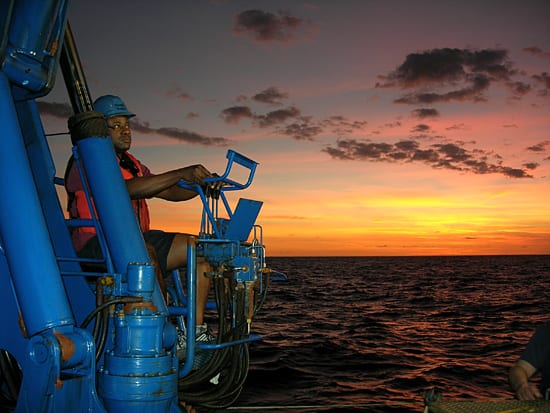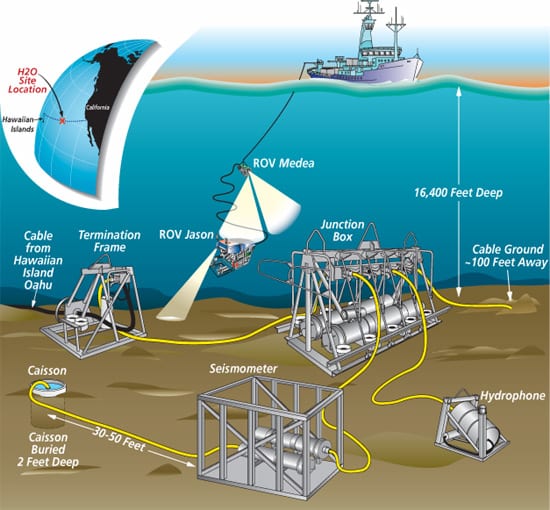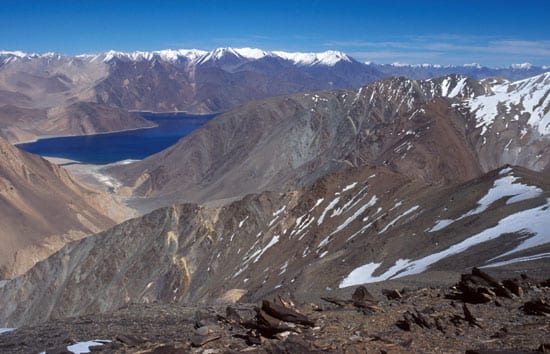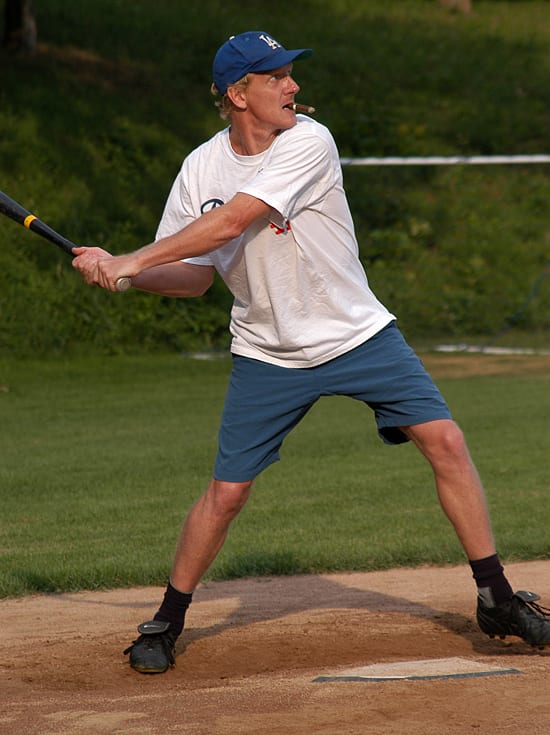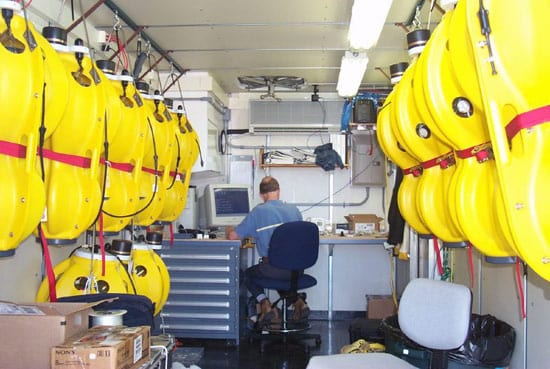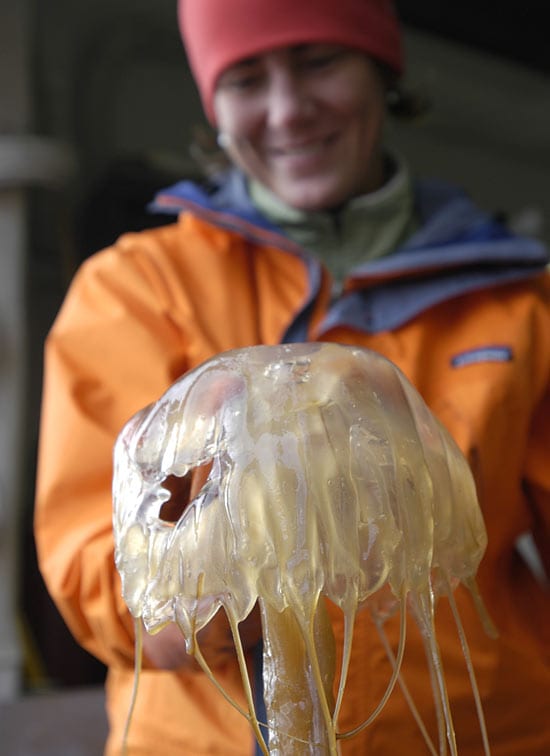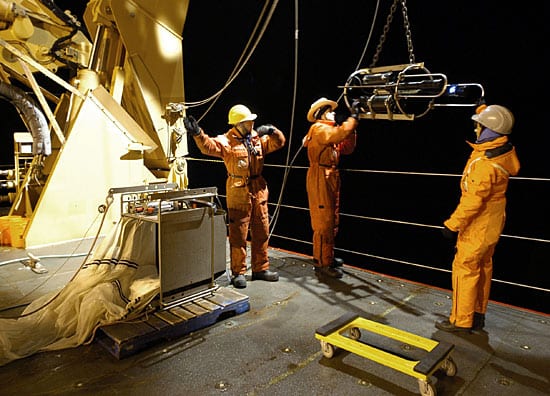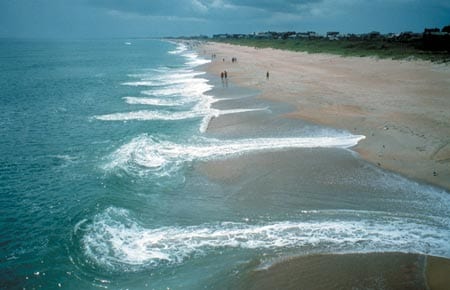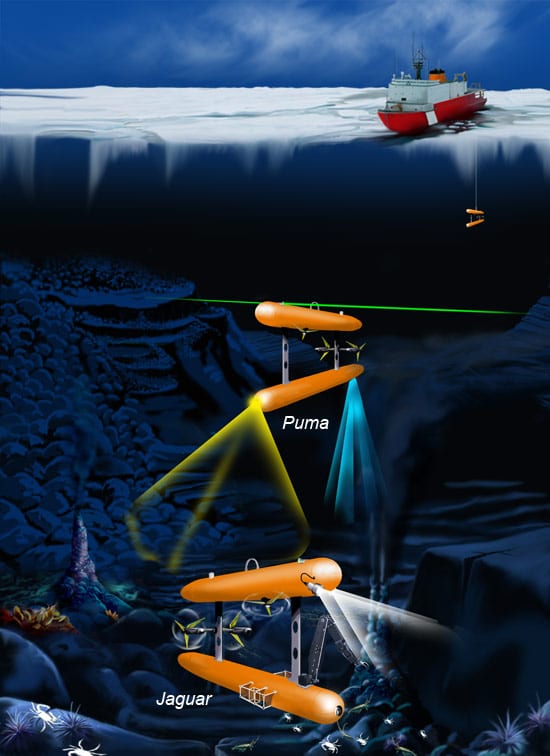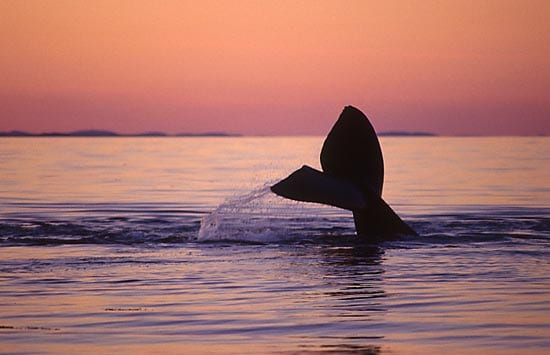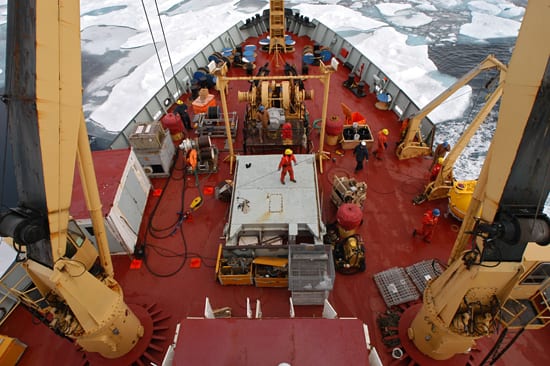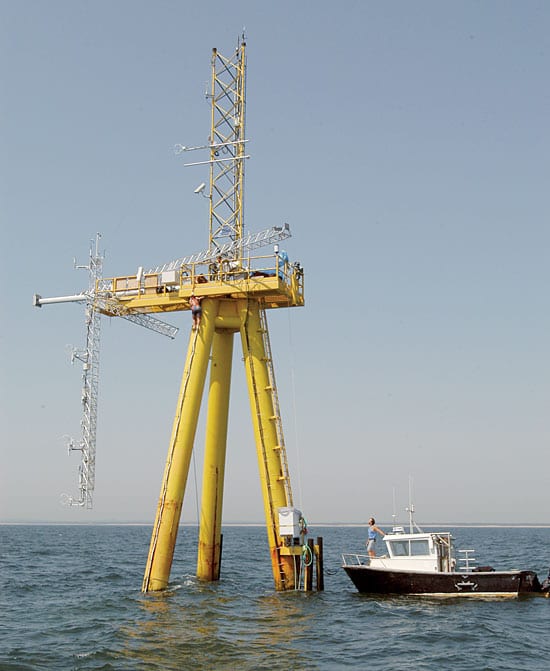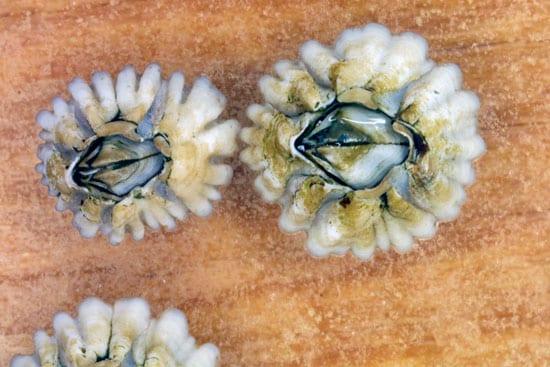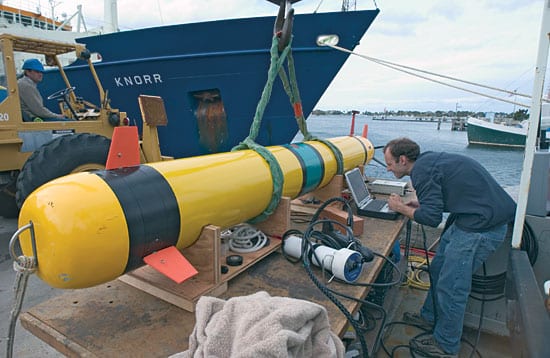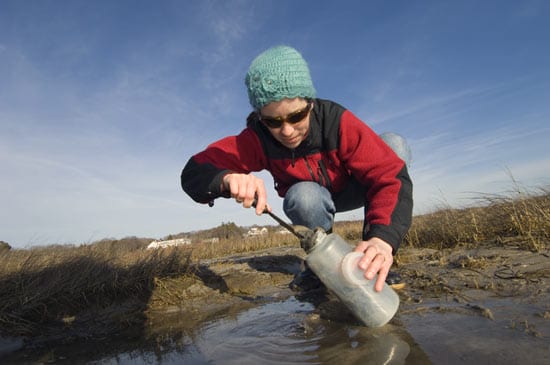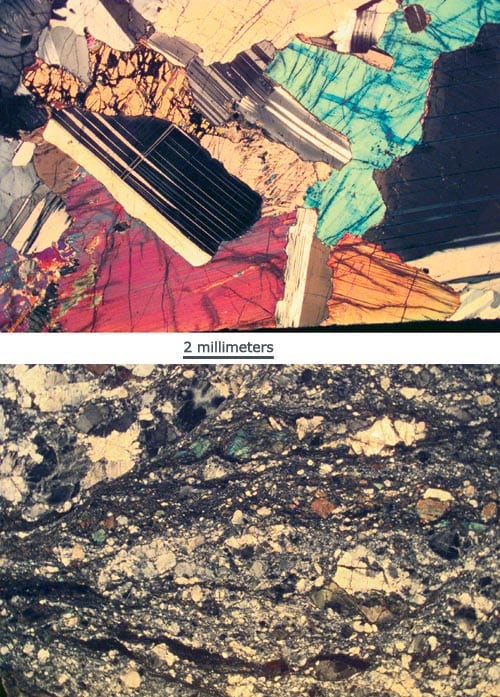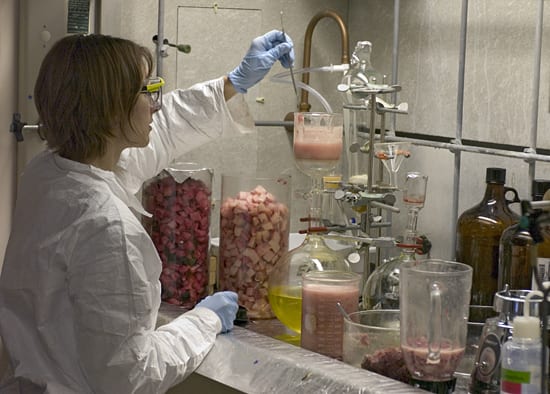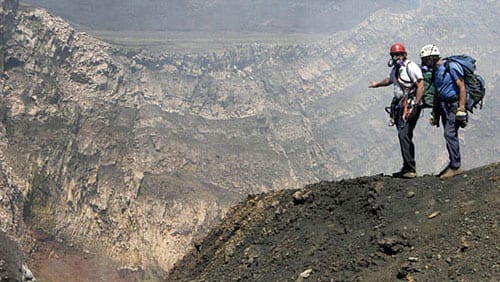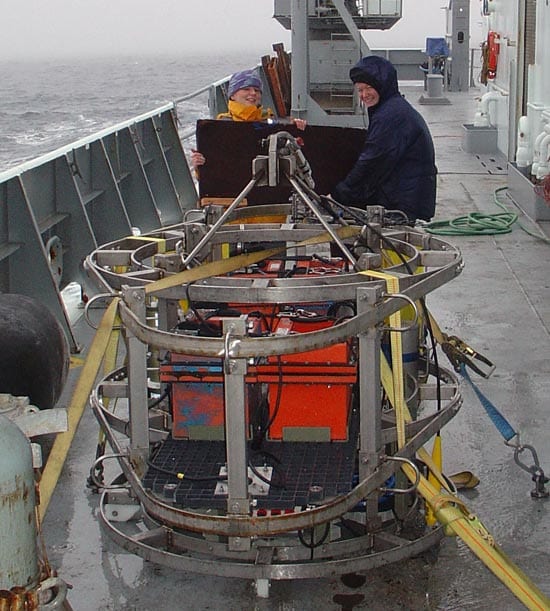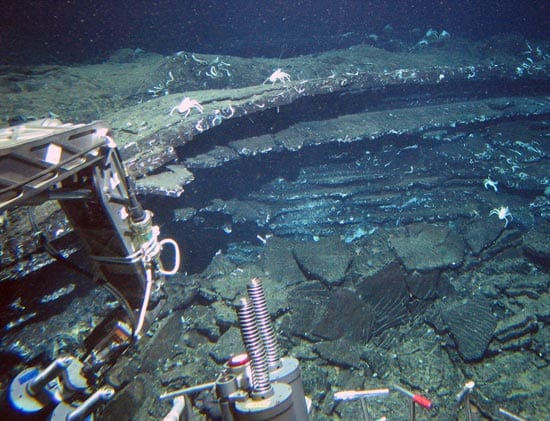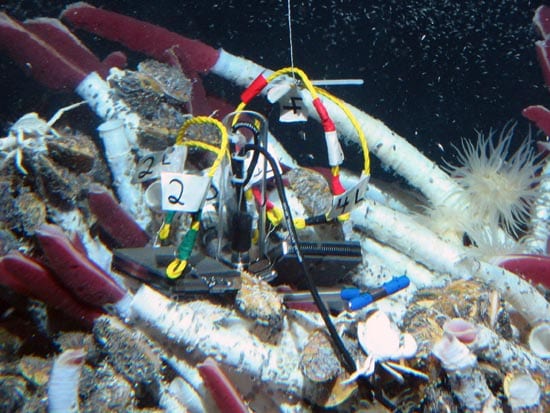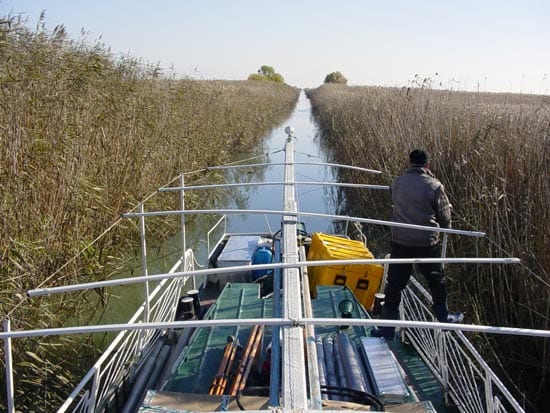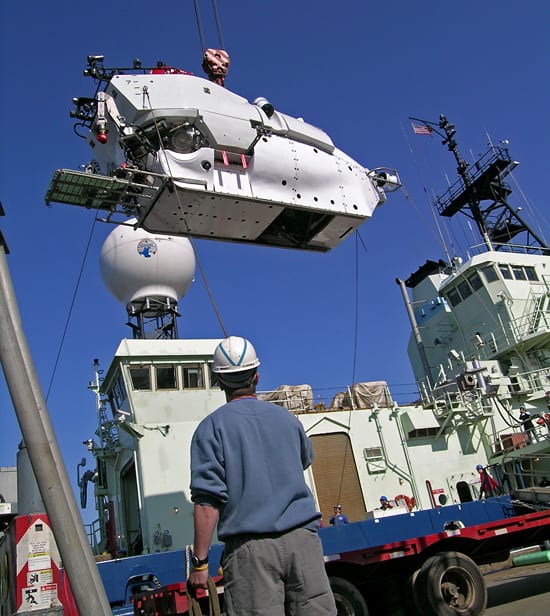Multimedia Items
Tropical Sunset
Thomas Anthony operates the crane aboard R/V Melville during the 2005 Lau Basin expedition in the South Pacific. Five expeditions to the territorial waters of the Kingdom of Tonga are…
Read MoreSeafloor Sentinel
In 1998, the remotely operated vehicle (ROV) Jason installed the Hawaii-2 Observatory, or H2O, in 5,000 meters (about 16,400 feet) of water using an abandoned submarine telephone cable. Initial experiments…
Read MoreSky High
A view of Pangong Lake in the Ladakh region of northern India, taken at an altitude of 18,000 feet, shows the great expanse of the Tibetan Plateau as far as…
Read MoreIn Full Swing
Participating in the summer WHOI softball league, Rob Reves-Sohn prepares to swing the bat for the Geology and Geophysics Department team. (Photo by Jayne Doucette, Woods Hole Oceanographic Institution)
Read MoreSeismic Sensors
New WHOI “D2” ocean-bottom seismometers are readied for field testing. Small and light for easy deployment and recovery, the D2 has a six-month battery capacity. The devices are available through…
Read MoreHoly Jellyfish!
This medusa was “captured” when it got tangled in equipment during an Arctic cruise. This jellyfish–which is the size of a human head, with tentacles six feet long–is a fairly…
Read MoreNight Shift
Night time deployment of a video plankton recorder (VPR) from the USCGC Healy. The underwater video microscope system helps scientists quickly measure the distributional patterns of plankton without destroying their…
Read MoreSand Sculpture
Waves, currents, sand grain sizes, sandbar configurations, water tablelevels beneath the beach, and other phenomena combine in complex ways to cause very different patterns along the same beach. (Photo by…
Read MoreArctic Explorers
Puma and Jaguar are autonomous underwater vehicles (AUVs) designed to overcome the technical challenges that preclude under-ice operations in the Arctic Ocean. Puma will detect and track hydrothermal vent plumes…
Read MoreA Whale’s Tail
A North Atlantic right whale dives in search of food near Grand Manan Island in the Bay of Fundy, Canada.(Photo by Michael Moore, Woods Hole Oceanographic Institution)
Read MoreAll Hands on Deck
The foredeck of the Canadian icebreaker Louis St. Laurent during a mooring deployment in the Arctic Ocean during the Beaufort Gyre Freshwater Experiment. (Photo by Christopher Linder, Woods Hole Oceanographic…
Read MoreStanding Tall
The Air-Sea Interaction Tower, part of the Martha’s Vineyard Coastal Observatory, allows scientists to deploy instruments that monitor the relationship between winds and waves in all weather conditions. (Photo by…
Read MoreBarnacle Beauties
Adult barnacles, about one year old, form plates to hold their body together and for protection. (Photo by Vicke Starczak, Woods Hole Oceanographic Institution)
Read MoreUnderwater Reconnaisance
Greg Packard (right) puts a REMUS 600 autonomous underwater vehicle through pre-launch checks before testing near Woods Hole. The vehicle, capable of diving to 600 meters, carries sensors for underwater…
Read MoreDigging for Data
MIT/WHOI Joint Program graduate student Sheri Simmons collects samples in Salt Pond in Falmouth, Mass., for studies of a previously unknown bacterium that incorporates magnetic minerals to make an internal…
Read MoreColorful Crystals
Using optical and electron microscopes, scientists can detect how crystals within rocks change their sizes, shapes, and orientations when the rocks are subjected to heat and stress. These atomic-scale changes…
Read MoreWhat’s in a Whale?
WHOI chemist Emma Teuten applied classical chemistry techniques, some kitchen skills and high-tech equipment to analyze the specific compounds found in the blubber of a True’s beaked whale found dead…
Read MoreMasaya Volcano
Scientific Sleuths
WHOI postdoctoral fellow Rhian Waller (left), University of Washington graduate student Deb Glickson, and colleagues tried to witness an undersea volcanic eruption in action on the Juan de Fuca Ridge…
Read MoreCurve Appeal
The 35,570-square-foot biogeochemistry building, now called the Stanley W. Watson Laboratory, under construction in 2005. The Watson Lab is one of two new laboratories on the Institution’s Quissett Campus, part…
Read MoreRose Bowl
Crabs thrive in a new vent site on the Galapagos Rift found in 2005. Its concave shape and lineage to previously found sites called Rose Garden and Rosebud–suggested the name…
Read MoreSeafloor Settlers
At the experiment site at the Tica Vent on the East Pacific Rise, basalt panels were placed in the center of a tubeworm colony to see if larvae would settle…
Read MoreCoring for Clues
WHOI geologist Liviu Giosan and colleagues cruise through a man-made canal in the Danube Delta in search of sites to take sediment cores. The history of the 6,000-year-old river delta…
Read MoreUp, Up and Away
After five months in overhaul in a nearby facility, the submersible Alvin was lifted April 12 by crane onto support vessel R/V Atlantis at the WHOI dock. Ship and sub…
Read More
